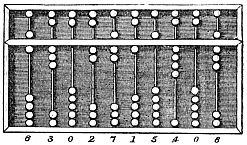Your donation will help us produce journalism like this. Please give today.
 When the California standardized test scores were released last week, the Daily News lauded LAUSD for “its best showing ever.” Superintendent John Deasy gave the district (and himself) a pat on the back, saying, “We’ve put a great deal of emphasis in this district on English-language arts, we’ve put a great deal of emphasis on reclassifying our English-learners (in language fluency) and we’ve put a great deal of emphasis in terms of algebra.”
When the California standardized test scores were released last week, the Daily News lauded LAUSD for “its best showing ever.” Superintendent John Deasy gave the district (and himself) a pat on the back, saying, “We’ve put a great deal of emphasis in this district on English-language arts, we’ve put a great deal of emphasis on reclassifying our English-learners (in language fluency) and we’ve put a great deal of emphasis in terms of algebra.”
This is all good news. But scores for Algebra, which is usually taught in high school, looked pretty dismal by comparison even though they were showing improvement. Why are high school students so bad at math, and what if anything can LAUSD do about this? I put that question to Mark Ellis, a Professor of Secondary Education at Cal State Fullerton who specializes in mathematics, and he gave me some interesting answers.
LAUSD’s English scores showed real improvement (see a full breakdown of scores here). But as you can see from the following chart only 15% of 9th graders scored proficient or advanced in Algebra I, and that number drops to 9% in 10th and 11th grade.
Compare that with scores on the English-Language Arts part of the test, where 39% of 9th graders are proficient or advanced, a number that holds steady in 10th and improves to 41% in 11th.
The raw differences are pretty stark, even though they have improved over the last few years, and their improvement has largely tracked improvement in other subjects. Here is a chart of 9th grade mean CST scores in three different subjects:
“In this country, we lag behind in high school math,” he says. “Kids do reasonably compared with other countries when they’re young, and the gap gets wider as they get older. Once the kids get into more abstract math like geometry and algebra, they’ve not done so well.”
As to why, Ellis gives three explanations:
1. Cultural Beliefs: “Many people in the U.S. believe that mathematics is tied to ability – some people have it and some don’t. In other countries, it’s the effort that matters more. The result is, it’s a lot easier for people here to give up on math.”
2. How Math is Taught: “In other countries, math is learned as a set of conceptual structures. Mathematics is a very logically structured set of ideas, and it should be learned that way. Yet in the U.S., we learn it as set of skills to be memorized and mimicked.” Ellis says that students can get by with memorization and superficially understanding of math for a while– until about middle school. Once they get to Algebra and Geometry, their lack of understanding of the logic behind math catches up to kids, and their performance plummets. They see Algebra as this meaningless exercise in abstraction, and not as a continuation of a set of logical rules.
3. Assessments: “No Child Left Behind forced states to create these assessment systems that tend to be about low-level knowledge. That has led to the narrowing of the curriculum, rather than the approach of critical thinking.”
Ellis, however, hopes that adoption of the Common Core Standards by the LAUSD and other school districts will start to build momentum toward learning math in a new and (according to Ellis) better way.
Superintendent John Deasy has set some fairly lofty goals for the district– in four years, no student will be allowed to graduate without passing the “A through G courses” which include Algebra and Geometry. Despite modest improvements, it looks as if those high school math scores will be the biggest roadblock to Deasy’s goal.


